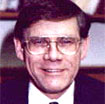Developing Focus in Sermons
During my seminary internship I was scheduled to preach on the first Sunday in Advent. This was one of the first sermons I ever preached. I thought it went quite well until I met with my supervising pastor to critique the sermon. He said, “You know, Jerry, you touched on every Advent theme there is in that sermon. What am I supposed to preach on for the next three Sundays?”
I learned that day about the importance of having a focus and developing that focus in a sermon. Whether we preach ten minutes, fifteen minutes, or even twenty minutes, a sermon is a very short time to present an idea and develop it in such a way that it will be well remembered. Over the years, I have learned some ways to develop sermon ideas and preach more focused sermons.
Establishing a Theme
One of the most important things to do before beginning the process of writing a sermon is to decide on a theme. Ken Davis, in his book, Secrets of Dynamic Communication, says this about the importance of focus in sermons: “I believe so strongly in the power of focus, I am convinced that any concerted effort to keep a sermon confined to a single objective will dramatically improve communication, even if that is the only effort made.”1 It is important to write out this objective or theme for your sermon. If you have it written out, you can tape it on your computer screen and use it to judge everything you put into your sermon.
Making an Outline
Making an outline is an important part of any writing project. It is particularly important when writing a sermon. I have developed a form for this over the years that I use as a flow chart. It is printed on an 11 by 17 piece of paper. It provides both a place to jot down ideas for the sermon as well as a place to organize these ideas into a workable order. It takes a little time to put together a good outline, but it saves time during the writing process.
Elaborate
The hardest thing for preachers, especially when they are first starting out, is to elaborate on an idea. When I preached that Advent sermon on internship, I touched on several Advent themes but did not elaborate or develop any of them. It took several years of writing sermons before I was able to get one idea out of a text and then build a sermon around that one single idea. Developing and expanding on an idea in a sermon is important for two reasons. First, focusing on a single idea or theme in a sermon helps our congregation remember the point we are trying to make. Secondly, good sermon ideas are like treasures. They are not so plentiful that we can squander several of them on a single sermon.
Illustrate
It is important to have illustrations in a sermon. Good illustrations help your listeners understand the point you are trying to make. Illustrations are full of images that make a sermon memorable as well as understandable for your hearers. Such illustrations are a key to the development of a well-focused sermon.
Return to the Theme
A good technique for staying focused in a sermon is to return to the theme of the sermon from time to time. By restating the theme throughout the sermon, you remind yourself, and your hearers, what the focus and main idea of the sermon is.
It is not easy to take an idea and develop, illustrate and bring the idea into focus for your listeners. However, if you can write a sermon that has a clear and well-developed focus, you give yourself a much better chance of communicating the key message of any given Biblical text.
1Ken Davis, Secrets of Dynamic Communication (Grand Rapids, Zondervan, 1991) 21.

